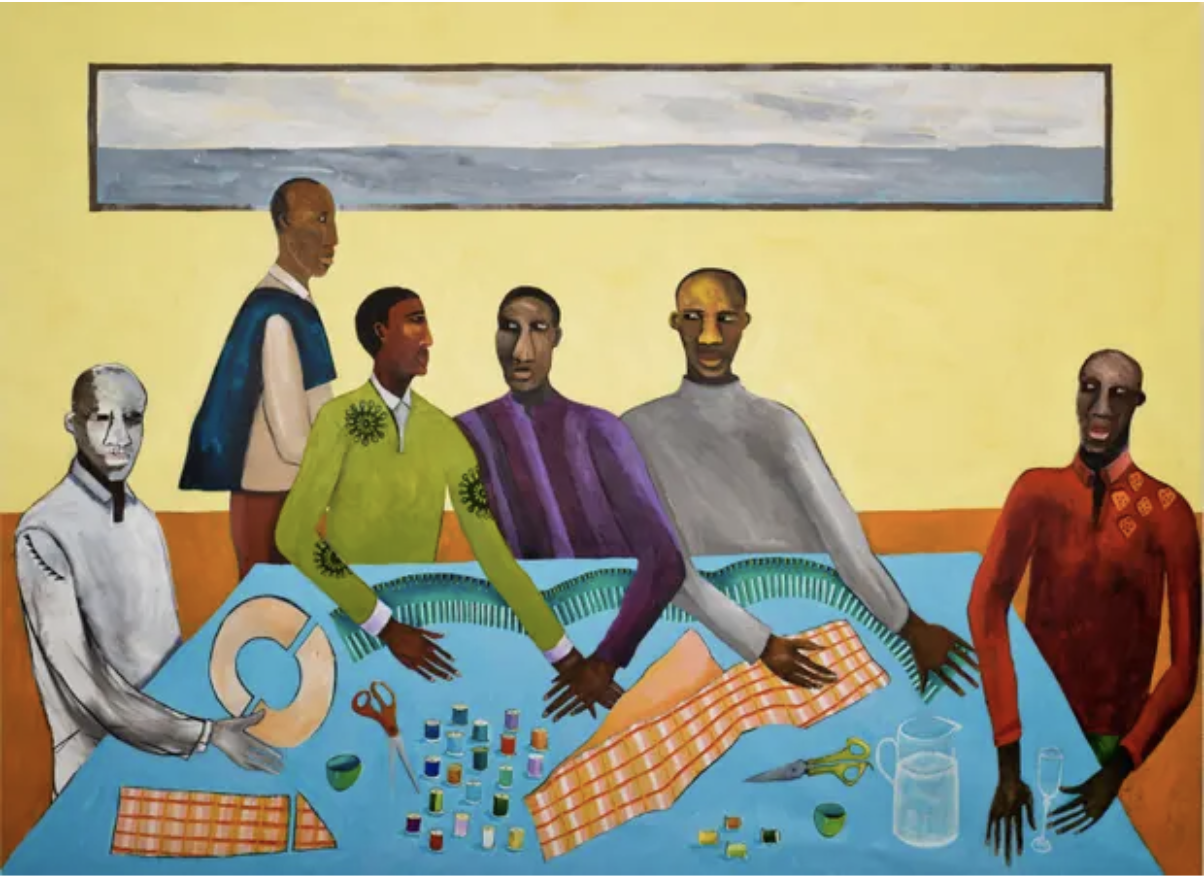Activist Art Finally Takes the Big Stage: Lubaina Himid at The Tate

By Toby Oliver- Clarke, BA History
Tuesday 23 November marked the opening of Lubaina Himid’s first solo exhibition at the Tate Modern. It also marked Himid’s biggest show to date, a chance for the still relatively unknown artist, theatre designer, and self-styled ‘cultural activist’ to finally bring her message to the main stage.
“Fittingly, the audience is called not only to passively observe Himid’s work, but to actively participate”
Fittingly, the audience is invited to not only passively observe Himid’s work, but to actively participate in bringing Himid’s paintings, sculptures, and sound pieces to life – an experience she describes as ‘being in the paintings.’ Himid hopes that the experience of engaging with the traumas and injustices of our past will prompt us to build a more just and equitable future. From the start Himid aims to provoke – tapestries made from East African fabrics hang at the entrance to the exhibition and pose the question: ‘How do I spell change?’
Unlike many retrospectives, Himid sees her work as not just a walk-through of her career to date, but a political opportunity. In the opening room, Himid starts as she means to go on. ‘Metal Handkerchiefs,’ a series of nine vibrantly painted metal sheets, speaks to the language and safety guides which shape the way our environment is constructed. Himid aims at getting us to question the normalcy of our political environment, a reminder that we hold the agency needed to shape the spaces around us. Accordingly, the opening room ends with ‘Three Architects,’ a painting which shows three women looking out onto the sea from the windows of their Utopian prison, pondering the possibility of a better future.
The ocean is a motif used throughout the exhibition, particularly in the second room where Hamid aims to bring to life the horrors of the transatlantic slave trade. The centre piece is ‘Old Boat/New money,’ a wooden ship made from metal beams that is accompanied by the sounds of the sea. Himid tells a story of duality – whilst the ship represents the horrors of the slave trade, the presence of the sea speaks to the unabated tide of progress. However, whilst retrospectively ‘Old Boat’ serves as a powerful reminder that our future must not replicate our past, it seems to fall flat when compared to her more combative work. Himid argues that she wants to portray the slave trade ‘without depicting bleeding and dying Africans.’ Whilst the dignified manner in which she approaches the subject may seem fitting, when placed in the grandeur of the Tate it feels timid and subdued. In a career defined by combative activism and a desire to challenge orthodox narratives, it seems all too polite and leaves the audience wondering if only for a fleeting moment whether the usually theatrical Himid has forgotten her lines.
Himid soon recovers the uninhibited advocacy that has come to define a career spanning 40 years. The penultimate room features a series of portraits depicting young Black men painted onto the inside of wooden drawers. Emerging from the walls of the gallery, they seem half opened, dusty, and neglected. The portraits are Himid at her uncompromising best – a clear message that we as a society have a duty to look into our past and give voice to those who were confined to history’s dusty attic.
‘Himid at the Tate’ will undoubtedly go down as the biggest event of a pioneering and long-lasting career. Himid manages to run the course of her career in a manner which avoids the lazy self-indulgence that is all too often the undoing of many retrospective exhibitions. More importantly, Himid provides the audience with more than just a show – she seeks and succeeds to provoke. Despite the uncharacteristic timidness which is evident at certain points of the show, Himid manages to provide a forum in which the audience is actively called to change the norm, whilst avoiding the aloofness and condescension which often taints activist art. Only time can tell whether Himid will ever truly receive her dues, but if The Tate is to mark the high point of an inimitable career, then surely the test of time will show that ‘Himid at the Tate’ was a fitting curtain call for an artist who transcends the boundaries of art and theatre.
Lubaina Himid is at The Tate Modern, London, From 25 November to 3 July.
Photo Caption: ‘Six Tailors,’ Tate Modern (Credit: Lubaina Himid via The Guardian).


